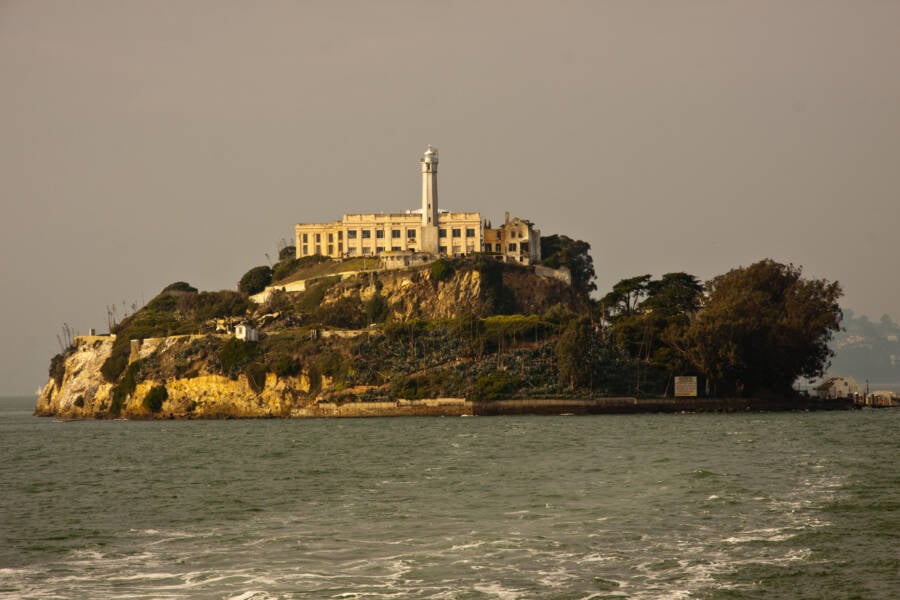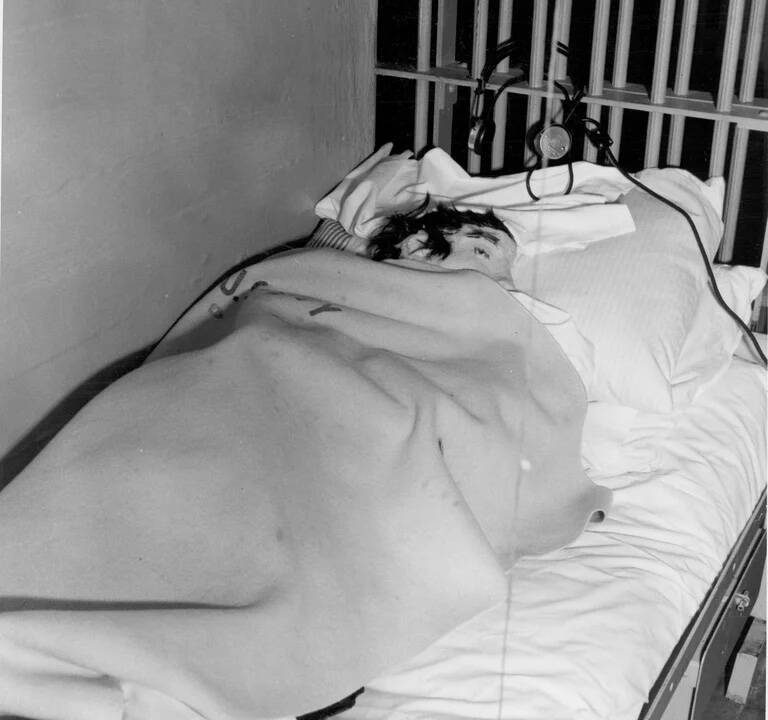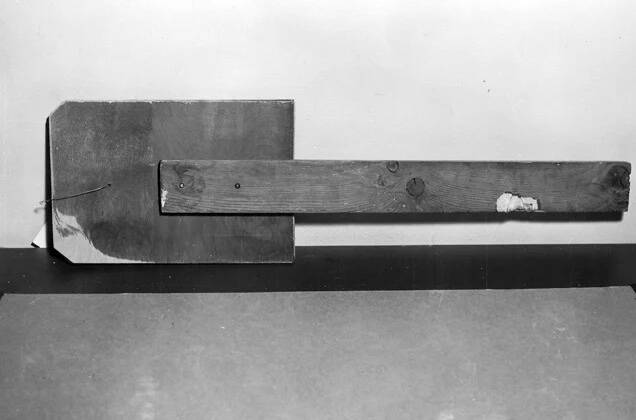On June 11, 1962, inmates Frank Morris, Clarence Anglin, and John Anglin became the only men to ever escape from Alcatraz Federal Penitentiary — but nobody knows if they made it out of San Francisco Bay alive.

Anthony Morgan / Alamy Stock PhotoAlcatraz Federal Penitentiary was thought to be escape-proof, but in 1962, three prisoners managed to sneak off the island.
Alcatraz Island’s history as a prison dates back to the mid-19th century, and it served as a federal penitentiary beginning in 1934. With its high walls, armed guards, and location in the middle of San Francisco Bay, the facility soon earned a reputation of being inescapable. However, the 1962 Alcatraz escape showed that while the odds of breaking out of the prison were slim, it was not an impossible feat.
On the night of June 11, 1962, inmates Frank Morris, John Anglin, and Clarence Anglin used papier-mâché heads to trick guards into believing they were asleep in their cells. They managed to escape from Alcatraz Federal Penitentiary in the dead of night — and they were never seen again.
The FBI and local law enforcement spent years trying to track the men down, to no avail. Countless theories were put forth about what could have happened to the Alcatraz escapees. Perhaps, some suggested, they had drowned while trying to float to Angel Island. Others claimed they had spotted the fugitives in places like Brazil, Maryland, and Florida.
After 17 years, however, the FBI closed its file on the 1962 Alcatraz escape. To this day, no one is exactly sure what happened to Morris and the Anglin brothers — but we do know how they managed to pull off their daring getaway.
Alcatraz, The Nearly Inescapable Maximum Security Prison
To understand just how insurmountable the task of escaping from Alcatraz was, it’s important to know about the prison’s history. Before Alcatraz housed a federal penitentiary, the island, which stands in the middle of San Francisco Bay, served as a naval fortress in the 1850s. By the end of that decade, military prisoners were held within its walls. Then, in the 1910s, the U.S. Army constructed a sprawling prison complex on the island.
In 1933, the United States Department of Justice took over the island, modernizing the structures and increasing security to transform the complex into a maximum security prison. Since Alcatraz was surrounded by water and the currents in San Francisco Bay are strong, many believed it was effectively inescapable. For a time, it was considered the most secure prison in the U.S.

Federal Bureau of InvestigationAlcatraz Island in 1932, the year before the U.S. Department of Justice began transforming it into a federal penitentiary.
For nearly three decades, it seemed that the facility truly was impossible to break out of. Prior to the 1962 Alcatraz escape, 12 other attempts were made by inmates to leave the prison, and none of them were successful. In each instance, the prisoners were either recaptured, shot, or drowned in San Francisco Bay.
That changed, however, on the morning of June 12, 1962, when guards discovered that Frank Morris, Clarence Anglin, and John Anglin had vanished from their cells.
Inside The Daring 1962 Alcatraz Escape
The first successful Alcatraz escapees began plotting their break in late 1961. The plan was hatched by Frank Morris, a career criminal with a rap sheet that included burglary, armed robbery, and drug dealing. According to a 2012 report in The New York Times documenting the 50th anniversary of the 1962 Alcatraz escape, Morris reportedly had an IQ of 133, which is higher than 98 percent of the population.

Public DomainFrank Morris, the ringleader of the 1962 Alcatraz escape.
Thus, it was Morris who assembled the other co-conspirators. He enlisted John and Clarence Anglin, two brothers from Georgia who had been robbing banks together since they were children, and Allen West, a car thief from New York.

Public DomainClarence Anglin and his brother John were the other two inmates who successfully escaped from Alcatraz in June 1962.
Morris brought these men together to carry out his daring plan. Over six months, the four men used stolen saw blades and spoons, as well as an improvised drill made from the engine of a broken vacuum cleaner, to gradually widen the ventilation ducts in their respective cells.
They worked at night during their cell block’s designated “music hour” as Morris played his accordion to hide the noise of their drilling. During the day, they concealed the holes they’d made with cardboard painted the same color as the walls of their cells.

Public DomainIn 2013, a man claiming to be John Anglin wrote a letter to San Francisco police stating that all three of the Alcatraz escapees had made it to freedom.
Widening these vents gave the prisoners access to an unguarded utility tunnel that ran behind the cells. From there, they could climb to the empty top level of the building, where they stored their true masterpiece: a six-by-14-foot inflatable rubber raft made out of 50 raincoats that had been stolen from the prison workshop or donated by other inmates.
As they constructed the raft over a period of months, the conspirators concealed their absence from their cells by fashioning convincing dummy heads and placing them on their pillows in their beds while they worked. The heads were made out of a papier-mâché material formed from soap and toilet paper and painted in a lifelike manner. The men even glued hair taken from the floor of the prison’s barbershop to them.
When all their preparations were complete, the prisoners made their escape.

Bettmann/Getty ImagesA view of the vent the inmates escaped from their cells through from within the utility corridor.
Morris and the Anglin brothers exited their cells and filed into the tunnel. West was unable to remove the grill covering the ventilation shaft when it became stuck and was left behind.
The men then climbed to the roof of the prison using a network of pipes, slid down the bakery’s smokestack, scaled two 12-foot-tall barbed wire fences, and scrambled down a cliff to a beach. At some point after 10 p.m., the prisoners embarked on their makeshift raft to a fate unknown.
What Happened To The Alcatraz Escapees?
Guards at the prison only discovered the disappearance of Morris and the Anglin brothers the next morning, thanks to the dummy heads the inmates had left in their cells. From questioning West, police discovered that the Alcatraz escapees planned to paddle to Angel Island, about two miles away.

Federal Bureau of InvestigationClarence Anglin placed this dummy head in his bed before he climbed out of his cell the night of the escape.
Three days after the 1962 Alcatraz escape, authorities found one of the men’s makeshift oars floating in San Francisco Bay. Then, on June 21, they discovered shreds of raincoat material on Angel Island. This discovery supports the possibility that the men survived the escape attempt.
However, FBI investigators at the time concluded that due to the strong currents and unfavorable weather conditions in the Bay on the night of June 11, it was unlikely that the Alcatraz escapees survived. They closed their file on the escaped prisoners in 1979, determining that the men likely died at sea. Many people dispute this opinion, however, and maintain that the three men successfully escaped the prison.

Federal Bureau of InvestigationThe Alcatraz escapees used this makeshift paddle to make their way to Angel Island — but nobody knows if they actually made it to their destination.
Experts and computer models have proven that it is possible that the men could have survived if they left the island when the tide was in their favor. “It’s very plausible they made landfall,” Dutch scientist Rolf Hut told CBS’s San Francisco affiliate in 2014.
Indeed, in 2013, a man claiming to be John Anglin sent a letter to police in San Francisco. It read: “My name is John Anglin. I escape from Alcatraz in June 1962 with my brother Clarence and Frank Morris… Yes we all made it that night but barely!”
The letter stated that Frank Morris and Clarence Anglin had died in 2005 and 2008, respectively, and that John Anglin was suffering from cancer. He wanted to surrender in exchange for medical treatment. The FBI was unable to determine if the correspondence was legitimate, and the true fate of the Alcatraz escapees remains unknown.
What is known is that one night in 1962, three men attempted the impossible — and may have even succeeded.
After learning about the 1962 Alcatraz escape, go inside more of history’s most daring prison escapes. Then, read about Yoshie Shiratori, the “Japanese Houdini” who escaped from prison four times.





